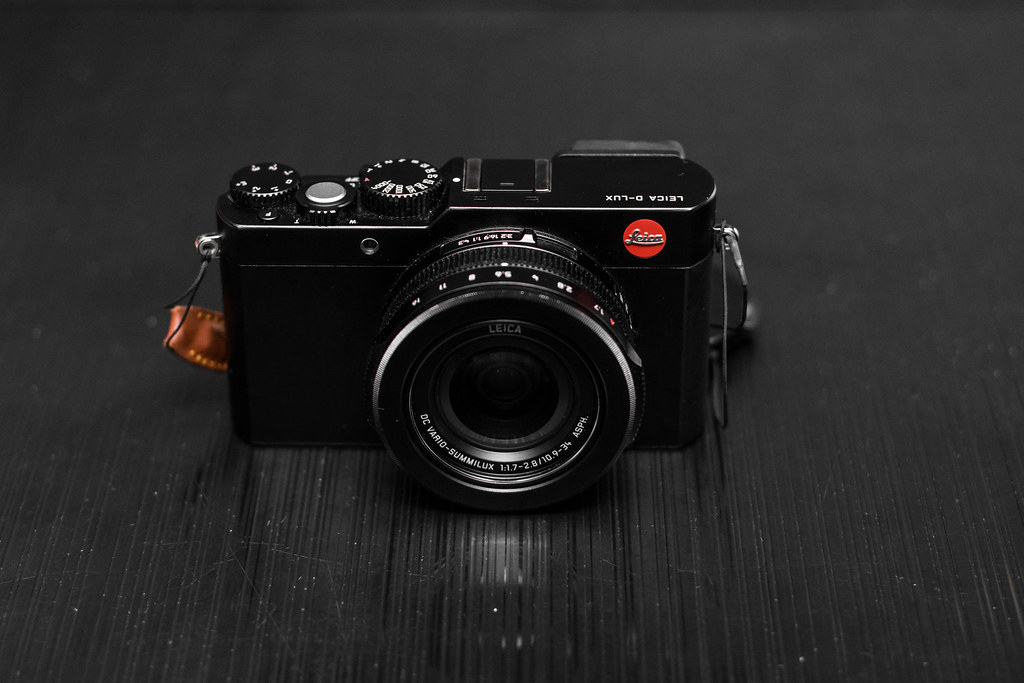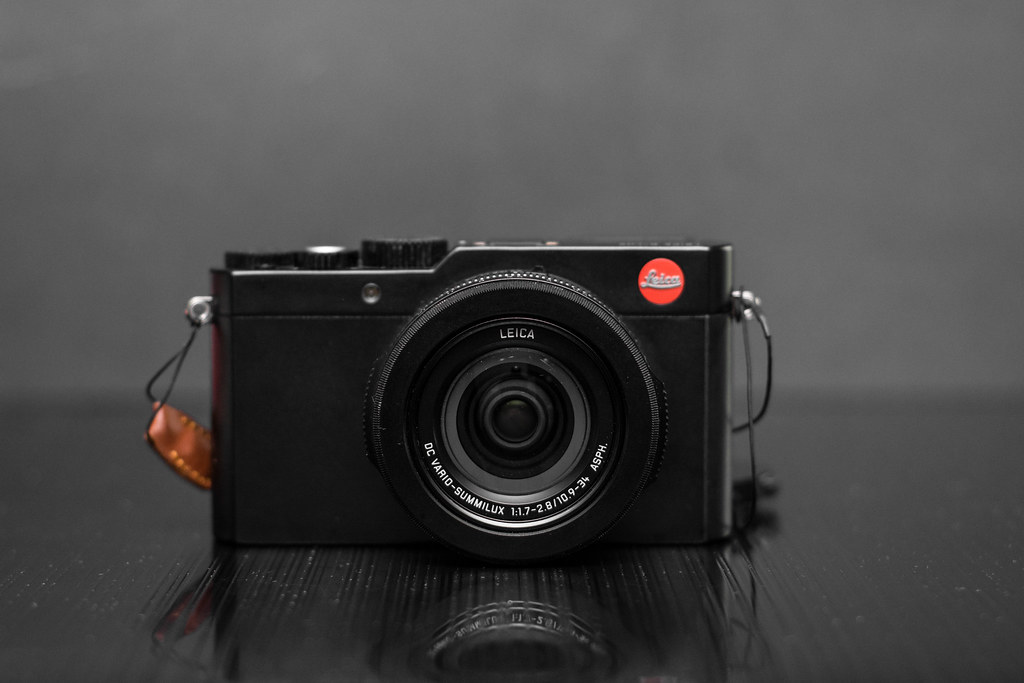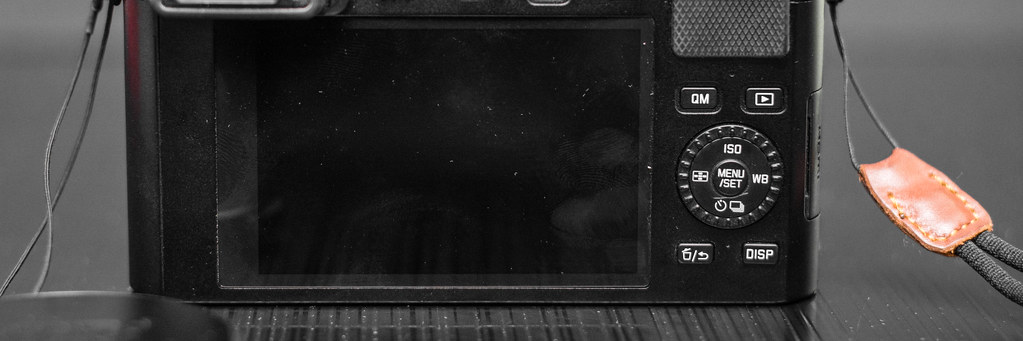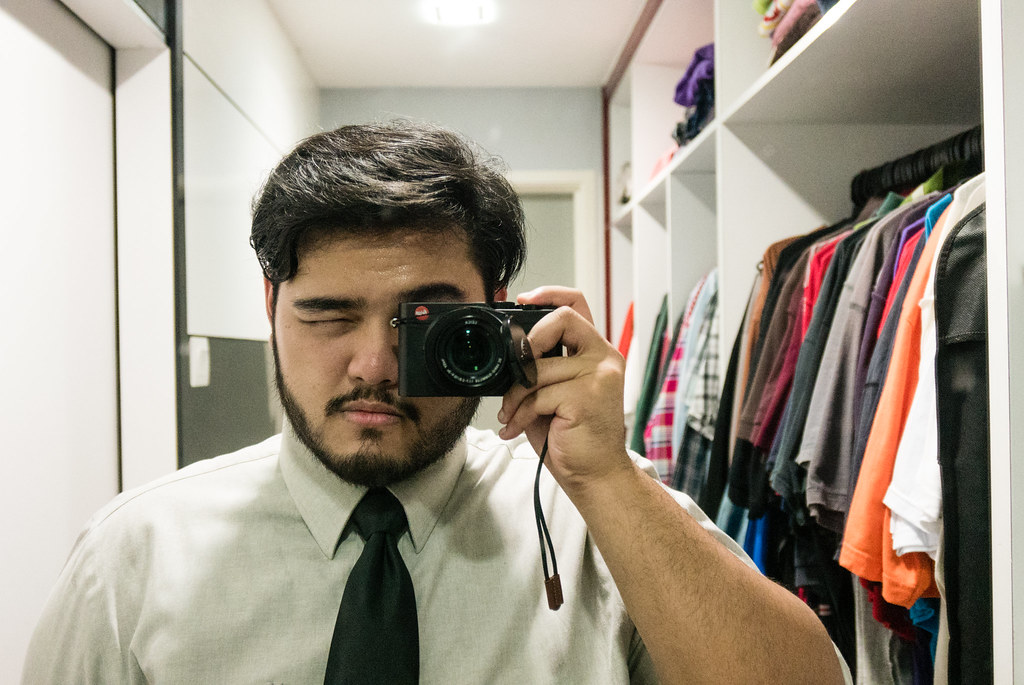What's up, everyone!
Now, to the review.
Design & Feel
One of the best things about the already sharp lens is that the fact that you can set it to increase gradually and stop at common focal lengths; i.e 24mm, 28mm, 35mm, 50mm, 70mm, and lastly 75mm.
Moreover, you can also turn ON focal length memory (?) so that the camera will remember your last used focal length.
This made it very easy to shoot on the go without having to re-zoom and recompose and made it feel like almost shooting a prime.
Most of the time, I would leave it at 35mm at f4 (f8 if I was shooting street in good light).
Image Quality
High ISO
Is This Camera For You?
Conclusion
Just a brief announcement:I am currently working hard to catch up with my research for my Master's degree, so I will be spending much less time creating content in the coming few weeks (I'm only working on my blog on weekends). However, I will be coming back with (hopefully) very exciting stuff after I get my work done towards the end of the year so do stay tuned to the blog and my YouTube channel here. For everyday updates and discussions, do follow my Twitter and Instagram.
Thanks a lot for all your support!
Now, to the review.
Leica D-Lux
Is this not centered?
When in talks with the people at Leica, I had the option of choosing among three cameras: the Leica V-Lux, Leica X an Leica D-Lux.
For me personally, I was contemplating between the X and D-Lux because I wanted a compact solution to my photography and I was heading for a very packed schedule in the two weeks Leica would loan me the camera.
I ended up choosing the D-Lux because it had a zoom and a viewfinder; and also because Kristian Dowling wrote a super awesome review of the camera and took AMAZING photos with it.
You guys should really check out the photos and review here.
Like it always is, my review will also be more like a user report more than anything else.
If you're interested in the details and specs of the camera, you can download the spec sheet and brochure here.
Design & Feel
Simply breathtaking
The design of the D-Lux is one to marvel at.
It is clean, smooth and sleek; and feels very nice in the hands.
The material it's made out of feels a lot like metal, but I don't know for sure.
It does feel a little slippery in the hands because it's so smooth but I never had an instance where it would accidentally slip out of my hand.
When I first saw the camera in person, it was really quite refreshing (for lack of a better word) to see the timeless, iconic design of Leica cameras implemented in their compact camera.
The all-black (albeit eye-grabbing red dot) finish of the camera gives it a stealth look and makes shooting inconspicuous for most of the time.
I love that it's small and easily fits into my pants or jacket pocket.
It makes everyday shooting that more fun without the hassle of lugging around a camera (and yes, I do say this a lot).
The reason I always point out the camera's mobility and portability is because for non-work related stuff, I really appreciate the minimalized weight.
Its small size and stealth look meant that I could even smuggle it into the hall during my graduation ceremony
Leica D-Lux | f/1.7 | 1/125 sec. | ISO-1600 | 10.9mm (24mm equiv.)
Street photography became less intimidating
Leica D-Lux | f/5.6 | 1/1000 sec. | ISO-200 | 15.9mm (35mm equiv.)
Operations
I honestly hoped I wouldn't have to rip on yet another camera but for real, the operations of the D-Lux was extremely frustrating.
And of course, it's mainly due to the rings.
"One ring to ruin them all"
The ring on the back of the camera doubles as a D-pad, which isn't really the problem.
The problem is that it's situated exactly where my palm rests and causes me to almost always (like, 85% of the time) accidentally turn the thing!
Turning this ring causes my shutter speed to change, which caused a lot of incorrect exposures, which then meant that I would either have to retake shots or miss them completely.
In an uncontrolled setting, especially in street photography, mess-ups aren't really welcomed.
Not only that, the control ring on the lens also caused the same problem.
I still think it's particularly strange to have three different rings/dials to adjust shutter speed: on the back, on the lens and on the top.
I really liked that the camera had dedicated aperture and shutter speed dials, but the other rings' functions were redundant.
Thankfully, I could turn the shutter speed adjustment function OFF for the front control ring.
But I still had to contend with the ever-aggravating rear ring.
"If you like it, then you should put a ring on it" (?)
Besides that, another thing that I didn't like at first was the rear D-pad.
The default setting takes you to the assigned controls as shown on the D-pad, so it was very difficult to change AF points quickly as I had to go into the quick menu, choose the specified AF mode, press down to choose the AF area/point and then finally get to shoot.
After a few days wrestling with the menu, I discovered a way to turn the shortcut buttons OFF and set the D-pad to straight away change my AF points.
However, this meant that I needed to assign one of my other Fn buttons to ISO, so I assigned the one on the bottom left (with the Trash icon) as my ISO button.
I also assigned the [EVF] button to AF area selection.
Once I got everything set the way I wanted, controls and shooting became much simpler.
I would sometimes leave the camera in aperture priority just to see how well it exposed, and I found out that it tends to underexpose the photos for some reason.
The screen on the back, too, wasn't that accurate exposure-wise, but the EVF helped a lot in determining my settings.
0.7x magnification with 2.7m pixels makes the EVF pretty spectacular
I used the EVF exclusively for all my shots for mainly two reasons: to save power and for better framing.
The EVF is quite brilliant, with approx. 2,700,000 pixels at 0.7x magnification with a refresh rate at 60fps.
The only downside is it's small size at only 0.38".
Even so, it was a very, very nice feature on the D-Lux and served its purpose very well.
Real shooters use a viewfinder (and take shameless selfies in their closet)
Leica D-Lux | f/2.3 | 1/60 sec. | ISO-3200 | 15.9mm (35mm equiv.)
The zoom on the camera was useful, as well.
With a range of 24mm to 75mm (35mm equiv), the camera was suitable for an array of things, such as family photos, street photography, travel photography and in some cases macro photography using the AF-macro functionality.
Beach > school
Leica D-Lux | f/4 | 1/1000 sec. | ISO-200 | 10.9mm (24mm equiv.)
Fesko 55
Leica D-Lux | f/2.8 | 1/1000 sec. | ISO-200 | 15.9mm (35mm equiv.)
Loving that detail
Leica D-Lux | f/2.8 | 1/100 sec. | ISO-800 | 34mm (75mm equiv.)
One of the best things about the already sharp lens is that the fact that you can set it to increase gradually and stop at common focal lengths; i.e 24mm, 28mm, 35mm, 50mm, 70mm, and lastly 75mm.
Moreover, you can also turn ON focal length memory (?) so that the camera will remember your last used focal length.
This made it very easy to shoot on the go without having to re-zoom and recompose and made it feel like almost shooting a prime.
Most of the time, I would leave it at 35mm at f4 (f8 if I was shooting street in good light).
Other things were good, too.
The battery life was actually pretty long, lasting about a whole 8 hours of ON-OFF shooting, including both photo and video (which also includes 4k footage).
One thing that drained the battery life extremely quickly was when taking time-lapses.
Even only after shooting about 1,000 photos on 80% battery, the camera immediately died out right after processing the time-lapse video in-camera.
Autofocus
The AF was average; not blazing fast nor bafflingly slow.
The D-Lux is able to quickly grab focus onto subjects that are stationery or ones that move at a fairly slow pace but when it comes to moving subjects, it isn't as snappy.
When you skip school and finally understand the meaning of happiness
Leica D-Lux | f/4 | 1/500 sec. | ISO-200 | 10.9mm (24mm equiv.)
Turning heads
Leica D-Lux | f/2.8 | 1/250 sec. | ISO-200 | 15.9mm (35mm equiv.)
The two photos above aren't as sharp as I would've liked but it does go to show that the camera is able to identify the subject in the frame although a little behind in locking focus.
Image Quality
Love wins
Leica D-Lux | f/2.8 | 1/250 sec. | ISO-200 | 15.9mm (35mm equiv.)
"Congratulations~ Congratulations~"
Leica D-Lux | f/1.7 | 1/125 sec. | ISO-1600 | 10.9mm (24mm equiv.)
Bokeh creamier than garlic cream spaghetti
Leica D-Lux | f/1.7 | 1/60 sec. | ISO-3200 | 10.9mm (24mm equiv.)
Without a doubt, the Leica D-Lux produces wonderful photos.
The color rendition is spot on, the clarity is great and the overall look of the photos even before processing is already where I want it.
For instance, this straight-out-of-camera JPEG below:
10/10 will get suspended
Leica D-Lux (straight out of camera) | f/4 | 1/250 sec. | ISO-200 | 15.9mm (35mm equiv.)
I was pleasantly surprised that the original JPEG was already perfect in terms of tone, clarity, contrast and color!
The lovely skin tone, even in direct sunlight, pretty much sealed the deal for me.
Another thing that I loved about the images is how the camera renders greens; unlike most cameras I've used (looking at you, Nikon), the camera doesn't produce vomit-inducing green coloration, nor was there an obvious green cast over the photos in instances where green dominates the color tone of the photo.
Although the camera is considered as a compact camera, it packs a relatively massive micro 4/3 sensor; beating out most of the competition in terms of sensor size.
The sensor holds 12.8MP (effective) but don't let that fool you because as unimpressive as it may sound, the RAW files contain a lot of information.
Case in point:
Original exposure
+4 exposure in Lightroom
Now if that doesn't blow your mind, I don't know what will.
Oh, wait; maybe I do.
Original exposure
+5 exposure in Lightroom
Like... what?
Ignore the obvious noise and grain from pushing the exposure up so much and you can appreciate just how much data is encrypted in the RAW file.
Like the pitch black photo, you wouldn't even have known that there was a light ray streaking across the frame until you bumped it up by 5 stops!
If you were spying on someone and needed to take a photo in total darkness, maybe the D-Lux can help you out!
Original white balance/temperature
Adjusted white balance/temperature to taste
I immediately transformed the scene from an ugly typical neighborhood street to a more cinematic feel.
Not only that, I didn't even hesitate to crop the photos as much as I wanted because I do admit that sometimes, some creative cropping can really help in telling the story.
Warung Man, one of JB's hidden treasures
High ISO
In contrast with what I usually do, I didn't push this camera to extreme ISOs.
My limit was ISO-3200 and I did this simply because I didn't think anyone who owns a compact camera would want to purposely shoot stuff at super high ISOs.
Also because upon purchase of a Leica D-Lux, you actually get a small flash as an accessory.
The high ISO performance up till ISO-3200 was pretty decent.
Some visible noise and grain in the shadow areas but detail is still retained quite nicely.
Parallelism
Leica D-Lux | f/1.7 | 1/80 sec. | ISO-3200 | 10.9mm (24mm equiv.)
Is This Camera For You?
The Leica D-Lux is a portable solution to all your daily photography needs.
Wow... That was just... definitive?
It produces fantastic photos, holds up in most situations and offers a very immersive photographic experience without the burden of a large and heavy form factor.
Of course, there are quirks that you need to get over, but if you're one to quickly adapt to the camera's needs, then I'm sure it'll be a great companion.
For a relatively cheap price tag (for a Leica) at around RM3,800, you could be a proud owner of a Leica camera!
Leic-a boss.
And yes, there is that Panasonic LX100 that costs about RM1,000 less, but the only advantage you'll get with the LX100 is in the video (4k 30fps vs 4k 25fps / 1080p 60fps vs 1080p 50fps).
With the D-Lux, you get a camera that's made in Japan (LX100 made in China), 3-year warranty (1-year for LX100), a cleaner, smoother finish AND most importantly: a red dot on the camera!
#sarcasm
But in all seriousness, I wouldn't not recommend buying the Leica D-Lux because it really does produce fantastic results.
What's more, it's in the same price point as a lot of premium compacts out there like the Sony RX100 MkIV or Fujifilm X100T.
Of course, you would still be able to go for a DSLR at this stage BUT you will lose a lot in terms of portability, mobility and also the capability of shooting 4k video.
Hmmm... I just realized that for once, they're selling a Leica that is actually reasonably priced.
Conclusion
To sum it all up, you really have to put things into perspective.
For what the camera does and what it can do, you really can't deny that it is a great addition to the mounting number of digital compacts out there.
Leica has come a long way with their digital products, especially after a lot of failures and near-misses with their previous cameras.
Furthermore, I really don't think it matters who actually manufactured the camera/camera parts.
Leica and Panasonic have long been partners in the industry, so it's no surprise if someone comes up to me/you and says that the D-Lux is practically an LX100 with a red dot.
That's not the point.
Sony makes Nikon's sensors; Samsung makes Apple's screens; water makes coffee; Indians make nasi lemak.
It really doesn't matter.
What matters to me is how the camera fares as a tool for capturing life and the moments that pass by.
And with that said, I'm pretty happy with what the Leica D-Lux helped me capture in the two weeks that I got to use it.
Huge thanks to Leica Malaysia for being gracious enough to lend me the Leica D-Lux.
If you guys are interested in checking out other Leica products or want to loan one yourself, do head over to the Leica Store Malaysia website here.
Check out all the photos from this review and more at my Flickr gallery here.
A little bonus info for you peeps that have made it here, all the photos shot on the Leica D-Lux in this entry are FULL RES, so you can click on them and enjoy them in all their full glory!
Thank you all for checking out my review.
All comments, questions and suggestions are welcome!
Just hit me up in the comment section below and I'll respond to you as soon as I can.
Till the next entry, take care!
DISCLAIMER: I do not represent Leica, Uniersiti Teknologi Malaysia (UTM) or any other brand that might be showcased/mentioned in this review. This review is written for THE FEAR, delivered with utmost honesty and sincerity.


























Comments